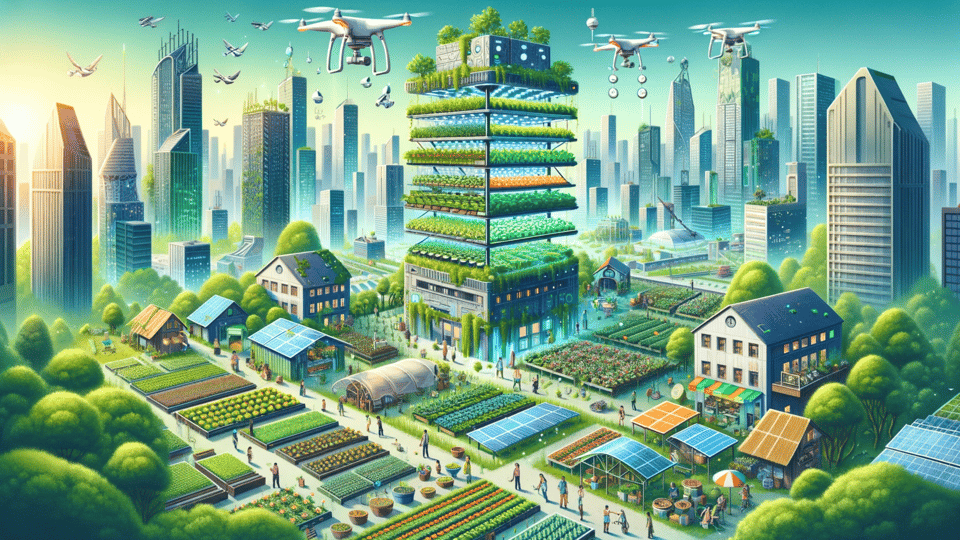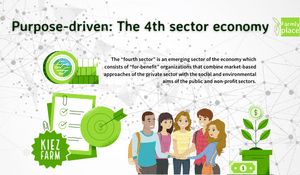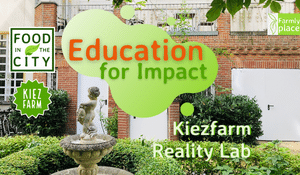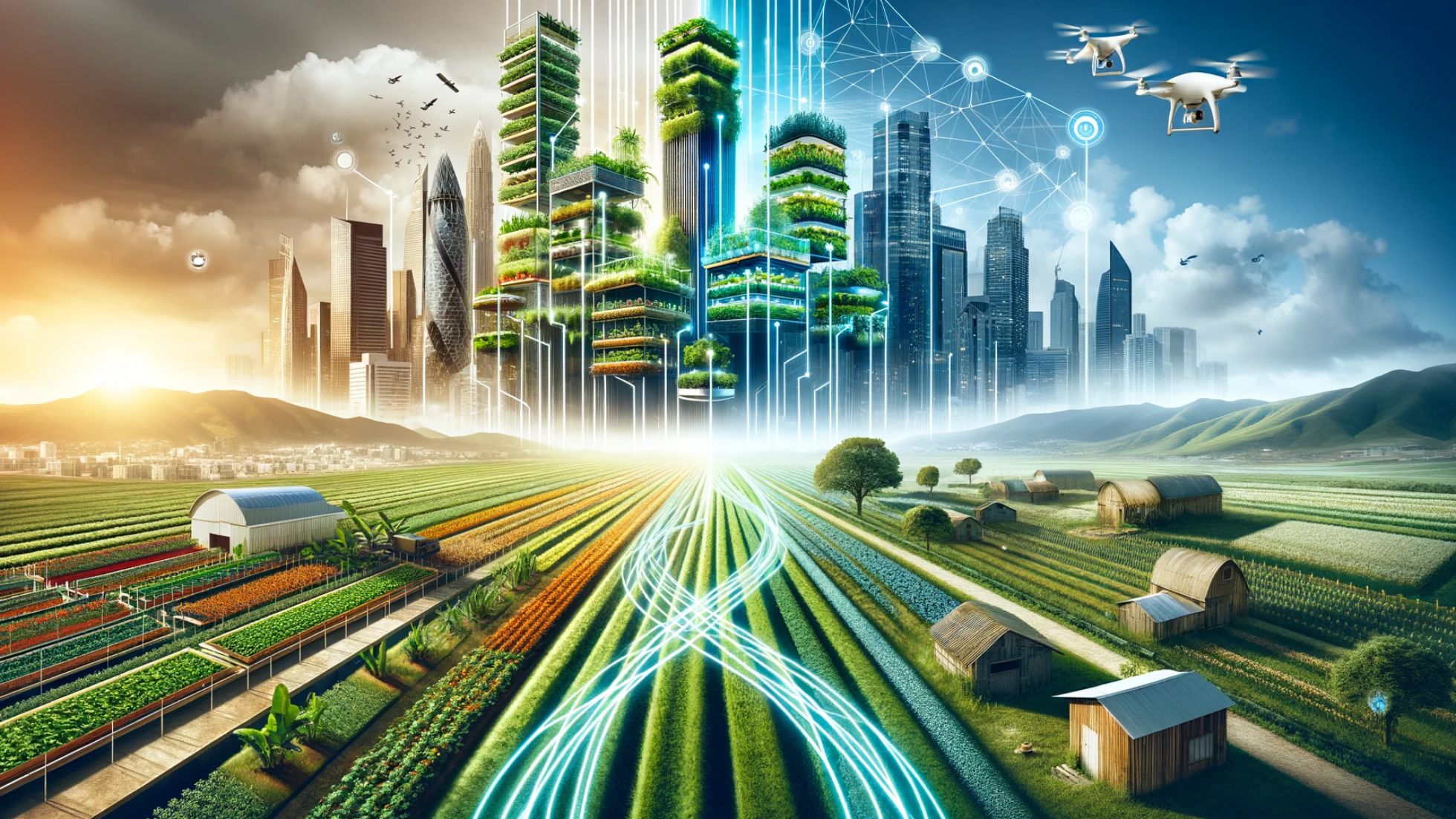In the concrete wastelands of our cities, a green revolution is quietly taking root. Hydroponics, a method of growing plants - entirely without soil - is breaking through the urban framework and offering a sustainable solution for food security, environmental sustainability and even social justice.
Hydroponics: A Green Solution for Urban Design
As urban populations continue to grow, innovative, sustainable, and inclusive solutions to address the challenges of food security, environmental sustainability, and climate change are becoming increasingly urgent. Hydroponic farming, a soilless agronomic method, is emerging as a promising solution. This technology, when integrated into urban planning, can transform neighborhoods into green, productive, and resilient spaces.
Hydroponic agriculture in urban environments offers a number of benefits. It provides a sustainable food source, reduces the environmental impact of conventional farming methods, mitigates the urban heat island effect, contributes to urban beautification, and helps maintain the microclimate in large cities. It also promotes social cohesion, diversifies food sources, creates income opportunities, and helps mitigate climate change.
Hydroponics, especially vertical farming, is not just a trend, but a necessity for our growing cities. An excellent example is the Urban Vertical Hydroponic Farming System in Sweden (https://www.mdpi.com/2071-1050/11/15/4124 ), which has demonstrated the environmental benefits of this innovative approach. Efficient water management and reduced environmental impact make hydroponics a viable option for urban neighborhoods seeking innovation and resilience.
-2.png?width=960&height=540&name=Hydroponics%20in%20the%20City%20(1920%20%C3%97%201080%20px)-2.png)
Social impact and community engagement
The social impact of urban hydroponics is profound. By diversifying food sources and creating income opportunities, it can reduce the vulnerability of the urban poor and foster a sense of community among city residents. It can also serve as an educational tool, raising awareness of sustainable practices and the importance of local food production.
Hydroponic farming also plays a critical role in combating climate change. By reducing the transportation of food from rural to urban areas, it can help reduce carbon emissions. In addition, introducing more green space in the form of vertical farms can mitigate the risk of heat spots, a common problem in densely populated urban areas.
Hydroponics is more than just a farming technique - it is a tool for social change. Urban agriculture diversifies food sources, creates new income opportunities, and fosters a sense of community. The Princeton Student Climate Initiative (https://psci.princeton.edu/tips/2020/11/9/the-future-of-farming-hydroponics ) is a testament to the inclusive nature of community-supported urban agriculture that improves the quality of life for all generations.
Educational support in the STEM subjects
![]() Community-based agronomy in cities is an inclusive approach that encourages participation by all members of society. Hydroponic agronomy can be an important component of such initiatives because of its simplicity and accessibility. It can also serve as a catalyst for the adoption of new technologies in agribusiness and pave the way for more advanced and efficient farming methods.
Community-based agronomy in cities is an inclusive approach that encourages participation by all members of society. Hydroponic agronomy can be an important component of such initiatives because of its simplicity and accessibility. It can also serve as a catalyst for the adoption of new technologies in agribusiness and pave the way for more advanced and efficient farming methods.
Schools should integrate sustainable development as a future issue into their curriculum and link it to subject-specific learning. The earlier children are introduced to sustainable development issues and problems, the more naturally they will later engage critically and actively with the major political, environmental, economic and social challenges of our time. The school years are an important phase in children's lives. During this time, they acquire skills for design and implementation, so that they can, for example, not only understand the ESD concept in Germany theoretically, but also apply it practically and independently.
In connection with hydroponic methods, educational trips, events and trainings can play an important role in current educational programs. These activities can provide hands-on experiences that complement theoretical learning. They can help students understand the science behind hydroponics, the benefits of this farming method in terms of sustainability, and its potential role in addressing global challenges such as food security and climate change.
In addition, these educational activities can inspire students to consider careers in fields related to sustainable agriculture and urban farming. They can also foster a sense of responsibility and stewardship for the environment among students, which is an important goal of sustainable development education.
Finally, tours, events, and training on hydroponic practices can also be a way to engage the broader community in the school's sustainability efforts. Parents, local businesses, and other community members can learn about hydroponics and its benefits, which can lead to broader community acceptance of this method and contribute to local sustainability initiatives.
By encouraging future generations to be able to meet future challenges through multidisciplinary thinking, Kiezfarm Educational Tours are contributing to a sustainable urban future today.

Use of heat from hydroponic lights - a circular economy approach.
In the field of hydroponic agronomy, the concept of the circular economy is becoming increasingly important. One of the most innovative applications of this concept is the use and reuse of heat generated by LED lamps in hydroponic systems.
LED lights are commonly used in indoor hydroponic systems to provide the light spectrum needed for plant growth. While they are more energy efficient than conventional lighting systems, they still generate significant waste heat. Instead of wasting this heat, innovative urban farms are finding ways to capture and reuse it, contributing to a circular economy.
On the one hand, the heat generated by the LED lights can be captured and used to heat the building where the hydroponic system is located. This is especially beneficial in colder climates where heating costs can be significant. By reusing the heat from the LED lights, municipal operations can reduce their energy consumption and operating costs. At the same time, water vapor can also be recovered from the exhaust air of the system as condensed water, which minimizes the water consumption of such systems. This mechanism is already being used productively in the Kiezfarm in Charlottenburg.
In addition, it is also conceivable to use the captured heat to heat the water in the hydroponic system. If the water were kept at an optimal temperature, this could even increase plant growth and the productivity of the hydroponic operation. This approach would not only increase the energy efficiency of hydroponic systems, but also minimize losses due to waste heat by reusing heat. This is a key principle of the circular economy, which aims to also avoid energy waste and continuously use resources.
In addition, reusing heat from LED lamps in hydroponic systems can help mitigate climate change. By reducing energy consumption, these systems lower their carbon footprint and reduce their environmental impact. The use and reuse of heat from LED lamps illustrates the principles of circular economy in urban agriculture.
Community catering and green procurement: The hydroponic advantage
Community catering in cafeterias and canteens plays an important role in the infrastructure of the community economy. These facilities not only provide meals, but also serve as social centers where community members can meet and interact. Integrating hydroponic produce into these community spaces can provide numerous benefits, especially when it comes to sourcing leafy greens.
Hydroponic growing allows for year-round production of leafy vegetables, regardless of outside weather conditions. This means that cafeterias and canteens can have a constant supply of fresh, locally grown produce. Not only does this ensure the availability of nutritious food, but it also reduces the need for long-distance transportation and thus carbon emissions.
Incorporating hydroponically grown produce into community catering can also contribute to healthy meals. Hydroponic growing typically uses less water and fewer pesticides than traditional growing methods. The result is produce that is not only fresh and local, but also free of harmful chemicals.
In addition, sourcing produce from local hydroponic facilities can boost the local economy. It supports local farmers and promotes sustainable growing practices. This is consistent with green procurement principles that emphasize environmental responsibility in the supply chain.
Community catering facilities can also serve as an educational platform. They can inform their guests about the origins of their food, the benefits of hydroponic farming, and the importance of sustainable eating habits. This can foster a greater appreciation for local produce and sustainable agribusiness in the community.
In the article "Urban Hydroponic Farms in the U.S.," Vertical Harvest's discussion of the social impact of hydroponics is well supported. It discusses how urban hydroponic facilities can create jobs and provide food for communities struggling with food insecurity.
Finally, integrating hydroponic growing into community food services can contribute to the overall sustainability of community infrastructure. It can reduce the community's environmental footprint, promote local economic activity, and improve the health and well-being of citizens.
Community catering in cafeterias and canteens offers a unique opportunity to incorporate hydroponic products into the city's infrastructure. In this way, these facilities can contribute to a greener, healthier and more sustainable city.
Solar energy and hydroponics: Energy for a circular economy
In our quest to create more sustainable and self-sufficient urban environments, the integration of renewable energy sources into hydroponic growing systems is becoming a compelling proposition. Solar energy is characterized by its accessibility, affordability, and potential for significant energy savings.
Solar panels can be installed on the roofs of buildings housing indoor hydroponic farms or at nearby locations with sufficient sunlight. The energy generated can be used to power LED lights, water pumps, and temperature control systems that are essential to hydroponics. This can significantly reduce dependence on the power grid, resulting in substantial energy cost savings and a lower carbon footprint.
In addition, the use of solar energy is in line with the principles of the circular economy. It is a renewable resource that can be used without depleting the planet's natural resources or causing harmful environmental impacts. By using solar energy for hydroponic systems, we can create a closed loop system where resources are used, generated and reused within the same system. "Solar Powered Hydroponics - A Comprehensive Guide" - from Agri Farming discusses the use of solar energy in hydroponic systems, which is relevant to the discussion of integrating solar energy into hydroponic agriculture.
In addition to operating hydroponic systems, excess solar energy can be stored in batteries for use during periods of low sunlight, or it can be fed back into the electrical grid, further increasing the energy efficiency of the system.
In addition, integrating solar energy and hydroponics can contribute to community resilience. In the event of power outages or grid disturbances, solar-powered hydroponic systems can continue to operate and provide fresh, local produce.
The use of solar energy can also boost the local economy. It can create jobs installing, maintaining, and operating solar panels and support the growth of local hydroponic facilities by lowering their operating costs.
Critics often point to the high energy consumption of hydroponic systems as a drawback. However, advances in renewable energy technologies and energy-efficient lighting systems can significantly reduce the energy requirements of hydroponic systems.
However, advances in energy efficient technologies such as LED lighting and also available renewable energy sources are reversing the trend. The Urban Rooftop Agriculture project (https://www.frontiersin.org/articles/10.3389/fsufs.2020.00076/full) is a shining example of how energy efficient hydroponics can be.
Integrating solar energy into hydroponic growing systems is a viable and sustainable solution for urban agriculture. It embodies the principles of the circular economy, promotes energy independence, and contributes to environmental and economic sustainability. In the article "Solar Hydroponics in Cultivation: What You Need to Know," Unbound Solar provides information on how solar energy can be used in hydroponic systems, supporting the discussion on the benefits of solar energy in hydroponic systems.
Mobile vertical farms: Made for urban agriculture
In the search for sustainable and innovative solutions for urban agriculture, the concept of mobile vertical farms is becoming increasingly important. These are essentially vertical farms on wheels that can be moved to different locations for temporary use and even rolled directly to the point of consumption. This innovative approach offers several unique advantages.
First, mobile vertical farms can bring fresh produce directly to consumers, eliminating packaging and transportation costs. This not only reduces carbon emissions associated with food transportation, but also ensures that produce arrives at the consumer's door as fresh as possible.
Second, these mobile facilities can be used to bring agribusiness to areas where it would otherwise be impossible or impractical. For example, they could be placed at community events, schools, or other public venues to provide an interactive and educational experience that raises awareness of sustainable farming practices.
Third, the mobility of these farms allows for optimal use of sunlight by moving the farm to locations with the best sunlight during the day. This can increase the efficiency of photosynthesis and increase crop yield. In addition, mobile vertical farms can serve as a solution to land scarcity in urban areas. The mobility of agronomic facilities reduces the need for dedicated cropland. This is especially beneficial in densely populated urban areas where land is a precious resource.
However, the concept of mobile vertical farms also presents some challenges. These include ensuring the stability of structures during transport, ensuring a constant water supply, and managing energy needs. However, with advances in technology and design, these challenges can be effectively addressed. The following article provides insights into considerations for starting a mobile vertical farm that are relevant to the discussion of mobile vertical farms. 5 Things to Know Before Starting Your Mobile Vertical Farm. Mobile vertical farms are an exciting development in the field of urban agriculture. By eliminating the need for packaging and transportation, optimizing solar gain, and making efficient use of urban space, they offer a promising solution to some of the most pressing challenges facing urban agribusiness. In "The Vertical Farm Goes Mobile" - from New Atlas, the benefits of mobile vertical farms are discussed, further supporting the discussion of the benefits of mobile vertical farm systems.
A way to make entire neighborhoods more resilient
In the future, neighborhood projects like the Kiezfarm could become an integral part of urban neighborhoods, including those with problematic levels of development. Powered by hydroponic technology, these farms could serve as hubs for local food production, community engagement, and environmental education. They could transform urban spaces, improve quality of life, and contribute to a sustainable and climate-resilient future.
In summary, hydroponic agriculture in urban planning offers a unique opportunity to address numerous urban challenges. It is a testament to the power of innovation and community engagement in shaping a sustainable, inclusive, and resilient urban future.
Neighborhood farms, like the neighborhood farm, that use hydroponic systems can transform neighborhoods with problematic development performance. Neighborhood farms can be integrated into existing urban infrastructure and transform underutilized spaces into productive green spaces.
Conclusion
Integrating hydroponic cultivation into urban planning is an effective tool for addressing a variety of urban challenges. It provides a sustainable solution for food production, reduces the environmental footprint of traditional agriculture and greenhouse farming, mitigates the urban heat island effect, and contributes to the beautification of our cities. It also helps maintain the microclimate in large urban areas, promotes social cohesion, diversifies food sources, creates income opportunities, and plays an important role in mitigating climate change.
Community-supported agriculture in cities, facilitated by hydroponics, is an inclusive approach that promotes participation by all members of society. It promotes acceptance of technology and has a positive impact on encouraging student:s to pursue STEM education.
While the energy consumption of hydroponic systems is always criticized, advances in renewable energy technologies and energy efficient lighting systems can greatly improve the energy performance of these farms.
The concept of neighborhood farms powered by hydroponic technology could become prevalent in neighborhoods, including those with problematic levels of development. These farms could serve as hubs for local food production, community engagement, and environmental education. They have the potential to transform urban spaces, improve quality of life, and contribute to a sustainable and climate-resilient future.
In summary, hydroponic agriculture in urban planning is a unique way to address many urban challenges. It is a testament to the power of innovation and community engagement in shaping a sustainable, inclusive, and resilient urban future. It is critical for local policymakers and leaders to consider and support these innovative solutions to ensure the long-term sustainability and resilience of our urban environments.





